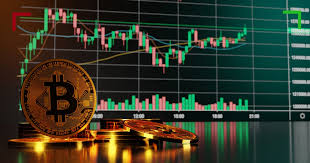14 Jun The Impact of Market Sentiment on Crypto Trading Volume

The Impact of Market Sentiment on Crypto Trading Volume
In the ever-evolving world of cryptocurrency, one key metric stands out among traders and investors alike: Crypto Trading Volume. This figure represents the total number of tokens traded over a specific period, providing insights into market activity and liquidity. Understanding the intricacies of crypto trading volume can significantly impact the decision-making process for traders. In this article, we will explore the factors affecting crypto trading volume, its importance in trading strategies, and how to leverage this information for better trading outcomes. For additional insights on trading strategies, you can Crypto Trading Volume visit website.
What is Crypto Trading Volume?
Crypto trading volume is a critical metric in the cryptocurrency markets, representing the total quantity of a specific cryptocurrency that is traded within a given timeframe. It is usually measured over 24 hours or 7 days and can be expressed in terms of the number of coins traded or the fiat currency equivalent. High trading volumes typically indicate strong demand for a cryptocurrency, while low volumes may indicate stagnation or lack of interest from traders.
Factors Influencing Crypto Trading Volume
Several factors can impact crypto trading volume. Understanding these factors is essential for traders looking to position themselves effectively in the market.
1. Market Sentiment
Market sentiment refers to the overall attitude of investors toward a particular market or security. Positive sentiment often leads to increased trading volumes as traders buy into a potential upward trend. Conversely, negative sentiment can lead to a sell-off, increasing trading volumes but with a downward trend. Social media trends, news coverage, and community discussions can heavily influence market sentiment.
2. Regulatory News
Regulatory changes or announcements can lead to significant fluctuations in trading volumes. For instance, news of potential bans or regulations may trigger fear and panic among traders, resulting in a surge of trading activity. Alternatively, favorable regulatory news can encourage traders to enter the market, thus boosting trading volumes.
3. Technological Developments
The introduction of new technologies, upgrades to existing blockchains, or innovations in trading platforms can spark interest and influence trading volumes. For example, the launch of a new feature on a trading platform may prompt existing users to increase their trading activity or attract new users to the platform.
4. Market Manipulation
Unfortunately, the cryptocurrency market is not immune to manipulation. Whale traders, or individuals holding large amounts of a cryptocurrency, can execute large buys or sells to sway the market in their favor. This can lead to spikes in trading volume that may not accurately reflect overall market sentiment.
The Importance of Crypto Trading Volume in Trading Strategies

For traders, understanding crypto trading volume is essential in developing effective trading strategies. Here are several critical areas where trading volume can play a pivotal role:
1. Identifying Trends
Traders use volume to confirm trends. For instance, if a cryptocurrency experiences a price increase alongside rising trading volumes, it could indicate a strong bullish trend. Conversely, if prices are increasing but trade volume is declining, it may signal that the trend is losing momentum and a reversal might happen soon.
2. Entry and Exit Points
Volume can help traders identify optimal entry and exit points. High trading volumes during price corrections may indicate good buying opportunities, while excessive trading volumes at price peaks may suggest that a price correction is imminent. This knowledge can help traders optimize their entries and exits.
3. Liquidity Assessment
High trading volumes often correlate with greater liquidity, making it easier for traders to buy and sell assets without causing significant price changes. Understanding liquidity can help traders avoid slippage when executing trades, improving overall trading efficiency.
Using Volume Indicators in Technical Analysis
Traders often complement their analysis with volume indicators that can provide added insights. Some widely used volume indicators include:
1. Volume Moving Average
By calculating a moving average of trading volume, traders can identify changes in volume trends over time, thereby enhancing their analysis and strategy.
2. On-Balance Volume (OBV)
This indicator uses volume flow to predict changes in price. A rising OBV suggests that buyers are willing to step in and push prices up, while a declining OBV suggests selling pressure.
3. Chaikin Money Flow (CMF)
The CMF combines price and volume to give a clearer picture of market trends. Positive readings indicate accumulation, while negative readings signify distribution.
Conclusion
In conclusion, Crypto Trading Volume is a fundamental aspect of cryptocurrency trading that offers insights into market dynamics and trader behavior. By understanding the factors that influence volume and its significance in trading strategies, traders can make more informed decisions. As the crypto market continues to evolve, paying close attention to trading volume alongside other indicators will be crucial for navigating its complexities. Whether you are a seasoned trader or just starting, incorporating volume analysis into your trading approach can enhance your ability to interpret market conditions and optimize your trading outcomes.

